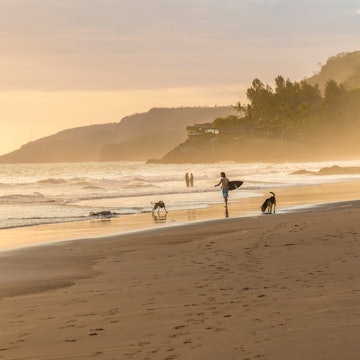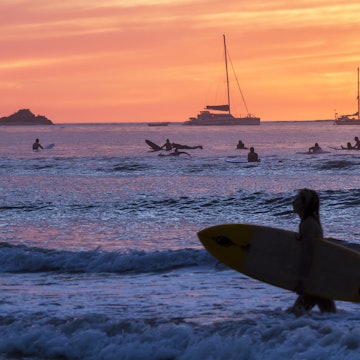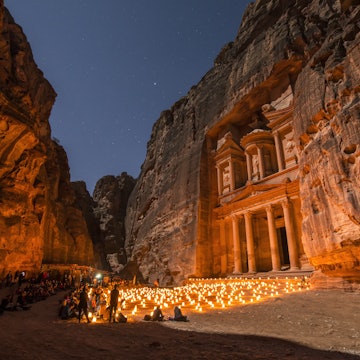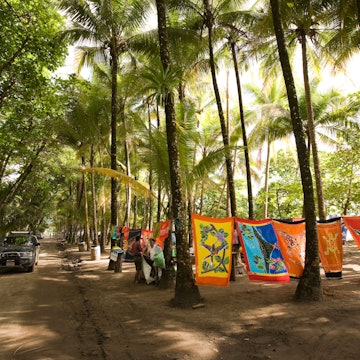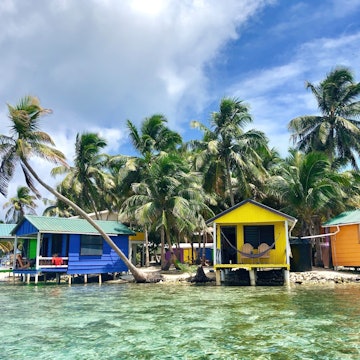

Snorkel along Panama's incredible coral reefs. Seaphotoart/Shutterstock
Boasting both Caribbean and Pacific coastlines, Central America is blessed with incredible dive and snorkel sites. From Belize's famed Blue Hole to the vibrant and colorful reefs dotted around Costa Rica, there's something here for every interest and skill set.
The marine life is at another level too. Whale sharks silently move through the waves, sea turtles paddle along next to you and beautifully colored fish surround you as you explore – one visit will never be enough.
A decent dive shop can supply all equipment, but if you have them, bring your mask and snorkel, a lightweight rash vest and reef-friendly sunscreen – and don’t forget your underwater camera. These are our favorite snorkel and scuba spots in Central America.
When is the best time to snorkel and dive in Central America?
Central America is a year-round snorkel and scuba destination, but conditions depend on the country, the season (rainy or dry) and whether you’re on the Pacific or Caribbean coast.
For a more tranquil – and cheaper – experience, avoid the region’s high season from December to April. But if there’s something specific you’re diving to see, you’ll have a fixed window.
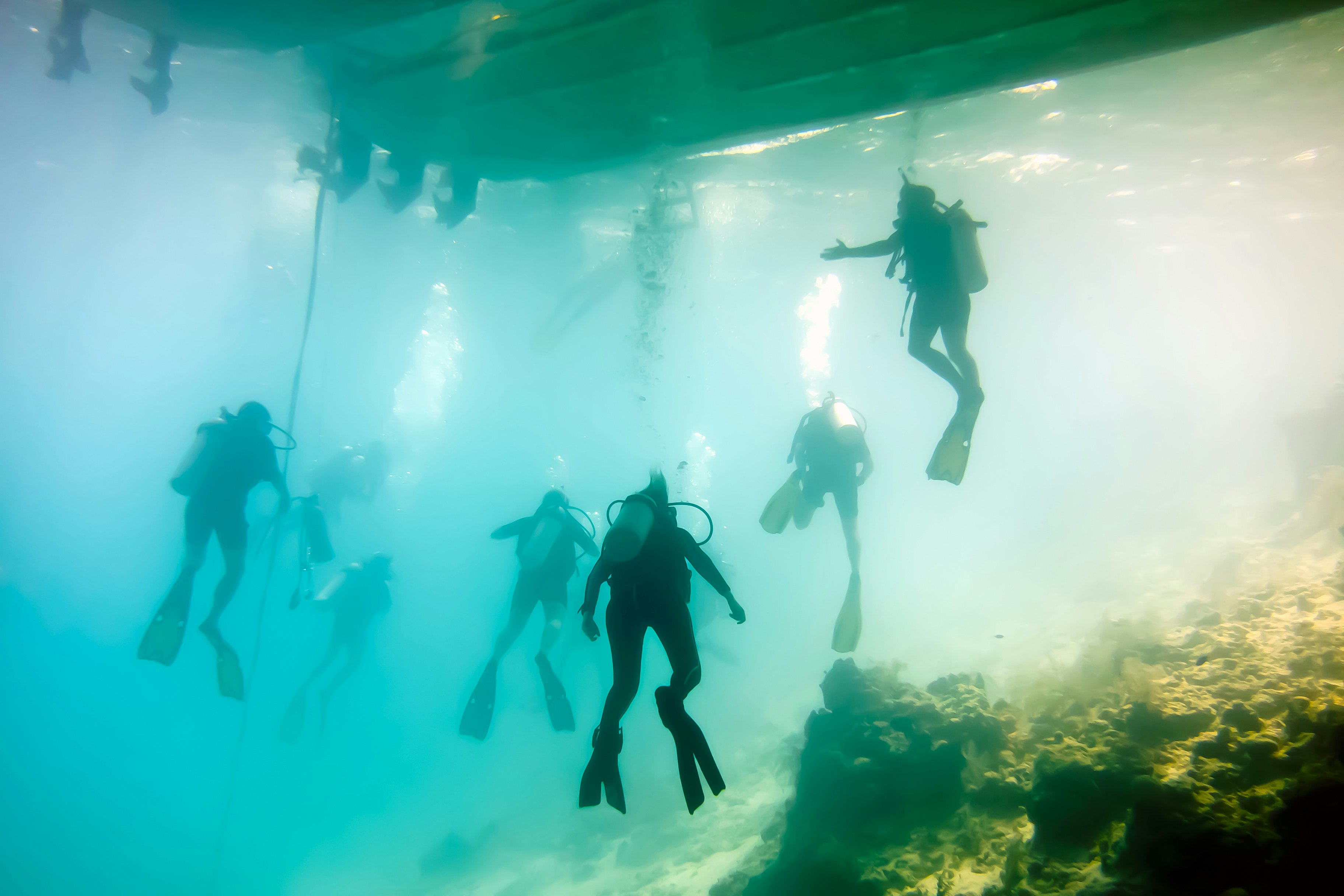
1. Caye Caulker, Belize
In pocket-sized Belize, the Caribbean-sun-drenched Caye Caulker makes the perfect jumping-off point for some of the world’s best diving and snorkeling.
Head south to the iconic Blue Hole Natural Monument at Lighthouse Reef, a marine sinkhole around 122m (400ft) deep and 300m (984ft) wide. Made famous by Jacques Cousteau, its mysterious depths and stalactite-studded caves still draw a crowd.
Or try Turneffe Atoll, a biodiverse mix of mangroves, lagoons and coral reefs, with snorkel and dive sites for all levels. Keep your eyes peeled for the endemic white spotted toadfish.
Getting there: It’s a 45-minute journey by ferry from Belize City.
2. Parque Nacional Coiba, Panama
In the not-so-distant past, Coiba – the American Pacific’s largest island – was home to around 3000 inmates. Today, along with some smaller islands, it’s a UNESCO-protected national marine park, and part of a project with Costa Rica, Colombia, and Ecuador to safeguard key migratory corridors.
Certified divers of all levels can swim with whitetip reef sharks, devil rays, turtles and a host of multicolored fish. You can often spot giant mantas and whale sharks, as well as humpback whales from July to September.
Getting there: To access the park, you’ll need to book through a dive shop, such as the Panama Dive Center in the surf spot of Santa Catalina. It’s a 75-minute boat ride to Isla Coiba.

3. Bocas del Toro, Panama
A string of laid-back Caribbean islands and islets, Bocas del Toro is not only a backpacker party hub – it’s also home to some of Panama’s best snorkeling, with gin-clear water and colorful coral.
The protected reefs of Admiral Bay are perfect for snorkeling, and at Hospital Point, beyond the shallows on the northern tip of Isla Solarte, there’s a deep reef wall that's ideal for night dives.
For a different view, mangrove snorkeling gets you up close to a tangle of algae-covered roots, vibrant sea sponges and juvenile fish darting around their nursery.
Getting there: It’s a 45-minute flight from Panama City to the capital of Bocas, Isla Colón, or around 11 hours by bus and ferry.

4. Bay Islands, Honduras
Washed by warm, clear water, the backpacker haunt of Utila – the smallest of the three main Bay Islands – is a great budget-friendly scuba destination, with no shortage of dive shops and must-dive sites. And you can spot whale sharks here year-round, whether you’re a beginner or a budding divemaster.
In Roatán, there’s world-class snorkeling just off West Bay’s white-sand beach, while Mary’s Place tempts snorkelers to its shallows to spot eagle rays and sea turtles, and experienced divers to its vertical reef walls.
Getting there: Take a ferry from La Ceiba or an international flight direct to Roatán.
5. Parque Nacional Cahuita, Costa Rica
Cahuita National Park’s underwater playground is home to more than 120 species of evocatively named fish – jewel fish, frogfish, butterflyfish – flitting around 35 types of equally exotic coral, such as elkhorn, brain and leather – and that's not forgetting the lobsters, urchins and moray eels.
Its pristine waters have been awarded Costa Rica’s Ecological Blue Flag, and you can get up close to loggerhead, leatherback and hawksbill turtles during nesting season from March to October.
Getting there: The park is around 47km (29 miles) south of Puerto Limón; use Puerto Viejo or Cahuita as a base.
6. Isla del Coco, Costa Rica
Jurassic Park meets Jacques Cousteau at the volcanic Cocos Island, some 550km (341 miles) off Costa Rica’s Pacific coastline. The French oceanographer dubbed this UNESCO World Heritage Site the most beautiful island in the world, and it also served as inspiration for the 1993 dinosaur film's fictitious Isla Nublar.
This underwater spectacle is for experienced divers only, and it’s expensive to get there. But you’ll be rewarded by schools of hammerhead sharks (at their peak between June and October) and countless whitetip sharks, rays and whale sharks.
Getting there: Book an eight-to-ten-day live-aboard trip from the port city of Puntarenas, with companies such as Aggressor Adventures and Undersea Hunter.

7. Little Corn Island, Nicaragua
Most of Little Corn’s 20 or so budget-friendly dive sites are a short boat trip from its powder-soft beaches. Reefs are generally shallow – no wall dives here – but forests of elkhorn and staghorn coral teem with kaleidoscopic fish.
For more experienced divers, the Tarpon Channel is the place to spot hammerhead sharks, and Blowing Rock, around 60 minutes away, will blow your mind. This spiky rock pinnacle emerging from the sea is a favorite hangout of reef sharks, rays, barracuda and more.
Getting there: Fly from Managua to Big Corn Island and take the twice-daily, 30-minute public boat to Little Corn.

8. Lago de Atitlán, Guatemala
Watched over by three active volcanoes, shimmering Lake Atitlán makes an unusual dive destination. But what Central America’s deepest lake – it reaches depths of 340m (1115ft) – lacks in technicolor fish, it makes up for with otherworldly lava formations, sunken villages, petrified trees and hydrothermal vents.
ATI Divers in Santa Cruz La Laguna is the lake’s long-standing dive shop. As well as fun dives and PADI certifications, they offer a one-day Altitude Specialty Course.
Getting there: Take the chicken or shuttle bus from Guatemala City or Antigua to Panajachel, then ride 10 minutes on a public boat to Santa Cruz.







